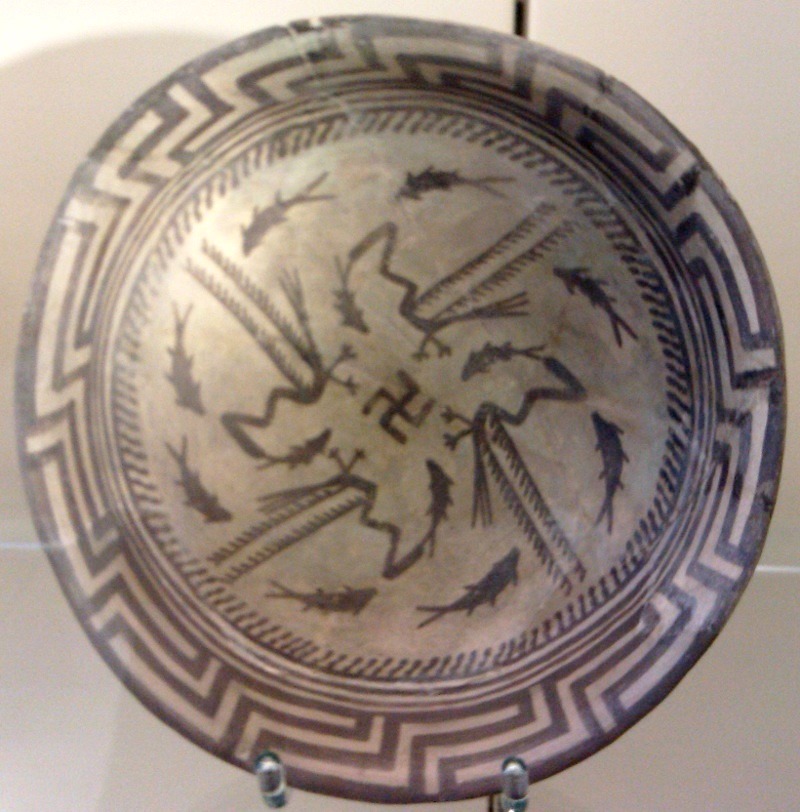The Sumerian pantheon: An, Dingir, Nin/Eresh, Shar
Posted by Sjur Cappelen Papazian on July 28, 2015









An

In Sumerian mythology, Anu (also An; from Sumerian An, “sky, heaven”) was a sky-god, the god of heaven, lord of constellations, king of gods, spirits and demons, and dwelt in the highest heavenly regions. It was believed that he had the power to judge those who had committed crimes, and that he had created the stars as soldiers to destroy the wicked. His attribute was the royal tiara. His attendant and minister of state was the god Ilabrat.
In Sumerian, the designation “An” was used interchangeably with “the heavens” so that in some cases it is doubtful whether, under the term, the god An or the heavens is being denoted. The Akkadians inherited An as the god of heavens from the Sumerian as Anu-, and in Akkadian cuneiform, the DINGIR character may refer either to Anum or to the Akkadian word for god, ilu-, and consequently had two phonetic values an and il. Hittite cuneiform as adapted from the Old Assyrian kept the an value but abandoned il.
The Hurrians found the small state (or states) of Urkesh & Nawar, based on the two cities of the same name in northern Mesopotamia. Nawar seems to fall under the control of the Akkadian empire for a period, with the city serving as an administrative centre. The names of five of the kings of Urkesh and Nawar are known for this period, but there are certainly others whose names have been lost. Uniquely, the people of Urkesh use the term ‘endan’ to refer to the early kings.
Dingir
Dingir (usually transliterated diĝir) is a cuneiform sign, most commonly the determinative for “deity” although it has related meanings as well. As a determinative, it is not pronounced, and is conventionally transliterated as a superscript “D” as in e.g. DInanna. Generically, dingir can be translated as “god” or “goddess”.
The sign in Sumerian cuneiform (DIĜIR) by itself represents the Sumerian word an (“sky” or “heaven”), the ideogram for An or the word diĝir (“god”), the supreme deity of the Sumerian pantheon. In Assyrian cuneiform, it (AN, DIĜIR) could be either an ideogram for “deity” (ilum) or a syllabogram for an, or ìl-. In Hittite orthography, the syllabic value of the sign was again an.
The concept of “divinity” in Sumerian is closely associated with the heavens, as is evident from the fact that the cuneiform sign doubles as the ideogram for “sky”, and that its original shape is the picture of a star. The original association of “divinity” is thus with “bright” or “shining” hierophanies in the sky.
The Sumerian sign DIĜIRoriginated as a star-shaped ideogram indicating a god in general, or the Sumerian god An, the supreme father of the gods. Dingir also meant sky or heaven in contrast with ki which meant earth. Its emesal pronunciation was dimer.
NIN

The Sumerian word NIN (from the Akkadian pronunciation of the sign EREŠ) was used to denote a queen or a priestess, and is often translated as “lady”. Other translations include “queen”, “mistress”, “proprietress”, and “lord”.
Many goddesses are called NIN, such as NIN.GAL (“great lady”), É.NIN.GAL (“lady of the great temple”), EREŠ.KI.GAL, and NIN.TI. The compound form NIN.DINGIR (“divine lady” or “lady of [a] god”), from the Akkadian entu, denotes a priestess.
NIN originated as a ligature of the cuneiform glyphs of MUNUS and TÚG; the NIN sign was written as MUNUS.TÚG in archaic cuneiform, notably in the Codex Hammurabi. The syllable nin, on the other hand, was written as MUNUS.KA in Assyrian cuneiform. MUNUS.KU = NIN means “sister”.
Ninsun (NIN.SÚN) is the mother of Gilgamesh in the Epic of Gilgamesh. The other personage using NIN is the god Ninurta (NIN.URTA). The other major usage is for the Akkadian word eninna (nin as in e-nin-na, but also other variants). Eninna is the adverb “now”, but it can also be used as a conjunction, or as a segue-form (a transition form).
Shar
Shar means shar-whole or entire. To Enki was assigned the control of the watery element, and in this capacity he becomes the shar apsi; i.e. king of the Apsu or “the deep”. Inanna (Old Babylonian or Neo-Assyrian MUŠ; Sumerian: Inanna; Akkadian: Ištar) was the Sumerian goddess of love, fertility, and warfare, and goddess of the E-Anna temple at the city of Uruk, her main centre.
Kish (Sumerian: Kiš; transliteration: Kiŝ; cuneiform: Akkadian: kiššatu) was an ancient city of Sumer in Mesopotamia, considered to have been located near the modern Tell al-Uhaymir in the Babil Governorate of Iraq, some 12 km east of Babylon and 80 km south of Baghdad. The Sumerian king list states that Kish was the first city to have kings following the deluge, beginning with Jushur.
In the Babylonian creation myth Enuma Elish, Anshar (also spelled Anshur), which means “whole heaven”, is a primordial god. His consort is Kishar which means “Whole Earth”. They were the children of Lahamu and Lahmu and the grandchildren of Tiamat and Apsû. They, in turn, are the parents of Anu, the god of heaven, lord of constellations, king of gods, spirits and demons.
If this name /Anšar/ is derived from */Anśar/, then it may be related to the Egyptian hieroglyphic /NṬR/ (“god”), since hieroglyphic Egyptian /Ṭ/ may be etymological */Ś/.
In Akkadian mythology, Antu or Antum is a Babylonian goddess. She was the first consort of Anu, and the pair was the parents of the Anunnaki and the Utukki. Antu was a dominant feature of the Babylonian akit festival until as recently as 200 BC, her later pre-eminence possibly attributable to identification with the Greek goddess Hera. Antu was replaced as consort by Ishtar or Inanna, who may also be a daughter of Anu and Antu.


Leave a comment